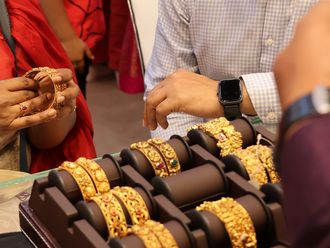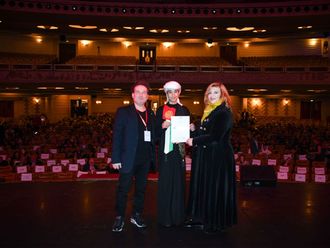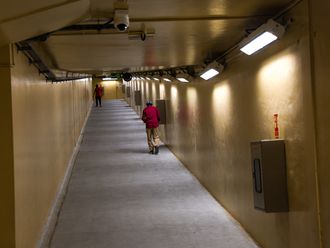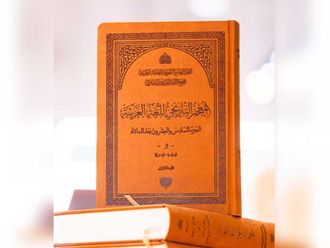Dr Potts |
The 'International Date Palm Forum: Date Palm Culture in the United Arab Emirates' was organised by the Emirates Centre for Strategic Studies and Research (ECSSR). The eighth specialised conference by the ECSSR opened on Sunday.
The panel of speakers includes more than two dozen local, regional and international experts and scholars from many Arab, Asian, European and African countries.
Presenting a paper on 'Date Palms and Date Consumption in the Gulf Region during the Bronze Age', Dr Daniel Potts, Professor of Middle Eastern Archaeology at the University of Sydney, said many archaeological excavations have yielded evidence of date consumption in the Gulf region during the Bronze Age.
"Although the Gulf region was only sporadically explored by archaeologists and antiquarians in the late 19th and early 20th century, it has been the scene of an ever-increasing number of excavations on prehistoric settlements since the 1950s, when the Danish expedition began excavations in Bahrain, Kuwait and the then Trucial States (UAE)."
He added that since that time, French, Danish, Belgian, American, British, Spanish, German, Australian and local archaeologists have investigated a number of major archaeological settlements.
"The nutritional contribution of dates to the diet of bronze age populations in the region, and the implications of date consumption for dental health in this region, are well illustrated by the skeletal remains found at numerous sites in Bahrain, the UAE and Oman," Dr Potts concluded.
Another expert, Dr Mark Beech, Environmental Archaeology Director at the Abu Dhabi Islands Archaeological Survey (ADIAS), also discussed early consumption of dates in his paper called 'Archaeological Evidence for Early Date Consumption in the Arabian Gulf'.
He said the exciting discovery of 7,000-year-old carbonised date stones on Dalma Island in Abu Dhabi emirate has made an important contribution in dating early date consumption in the Middle East.
"Several date stone impressions were also discovered in burnt mud brick fragments at the site. Recent archaeological excavations, carried out in Kuwait at a site dating back from a similar age, have uncovered traces of mineralised date stones," ADIAS expert said while referring to other regional excavations to confirm the early consumption of dates in the region.
Dr Beech said date palm residue trances have been successfully identified from a first century AD site near the main entrance of an ancient temple at Add Dur in Umm Al Quwain.
"This particular deposit, along with a bronze ring seal, illustrating a person holding what appears to be a palm leaf, clearly illustrates the symbolic as well as economic importance of dates in the region," he explained.
Dr Beech also referred to early consumption of juice extracted from dates in the region. He said evidence from ancient Dilmun (Bahrain) sites indicate the early consumption of date juice.
"New biomolecular evidence may now also be used to examine pottery and other vessels for residual traces of date juice, as in the case of recent work carried out on material from Nubian site of Qasr Ibrim in Egypt," Dr Beech said.
The conference also discussed date palm domestication and its origin. A comprehensive study, called 'The Origin of Date Palm Domestication; The State of Research on the Origins of Phoenix Dactylifera (date palm)', was presented by Dr Margareta Tengberg, a Swedish lecturer in archaeology at The Sorbonne in Paris.
She said the domestication of the date palm, aimed at obtaining larger quantities of bigger and more tasteful fruits, involves various manipulations intervening in the natural cycle of the tree.
"The use of artificial pollination compensates for the deliberate predominance of female, fruit-bearing palms. Vegetative propagations of clones, the form of basal suckers, ensures the reproduction of chosen morphotypes."
Dr Tengberg added that, based on written sources, such practices are known to have existed in lower Mesopotamia (Iraq) more than 4,500 years ago, but the place and time of the initial domestication of the date palm still remain a mystery.
"Remains of the species since the late 6th millennium BC, in the form of fruits, seeds, wood or imprints, are found on numerous archaeological sites in the Middle East."
Dr Tengberg added that in some cases, notably in the Mekran region of Baluchistan, Pakistan, the small size of the identified date seeds seem to suggest the gathering of wild dates.











